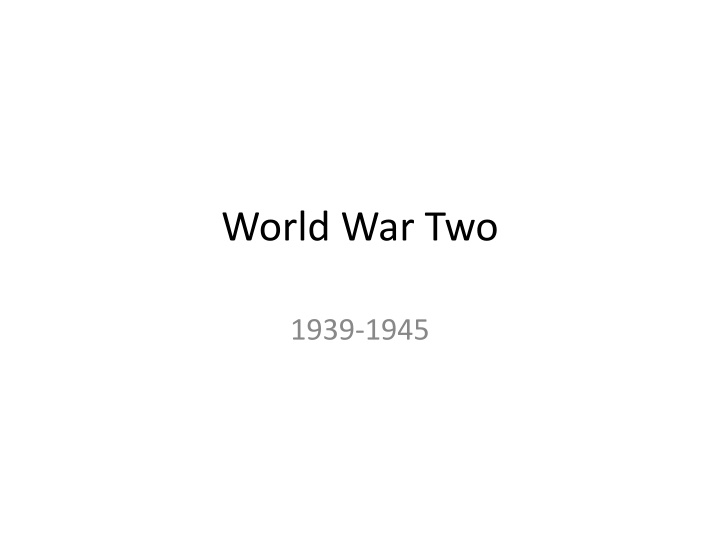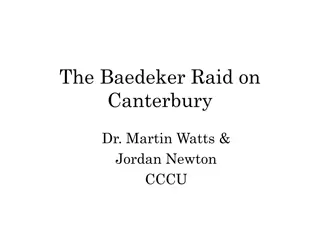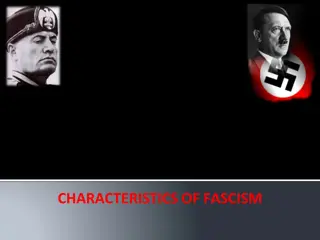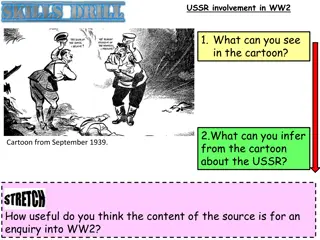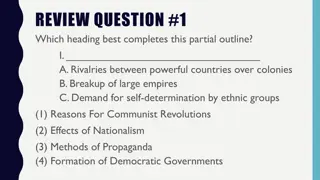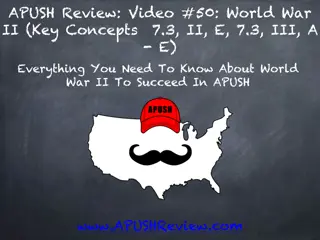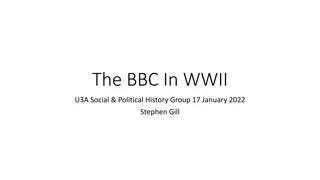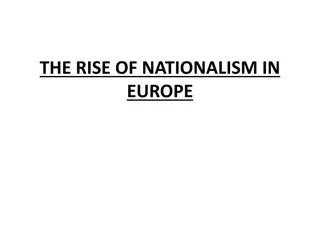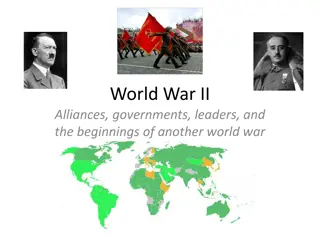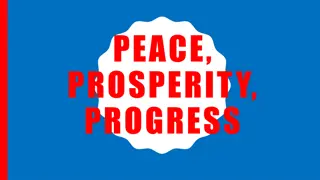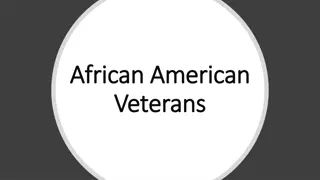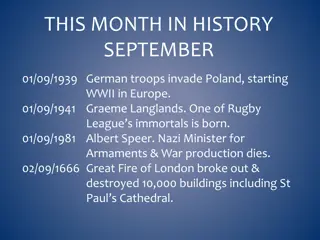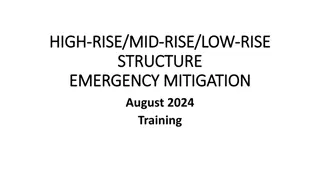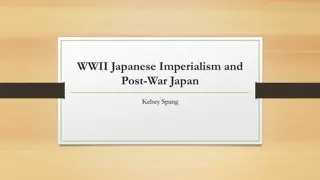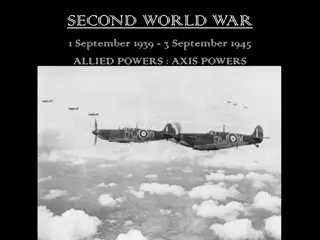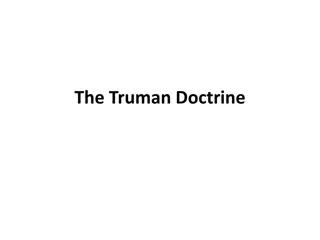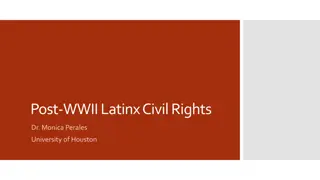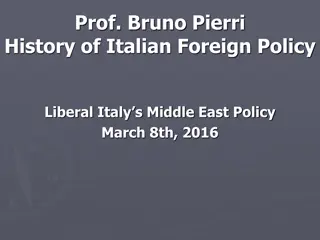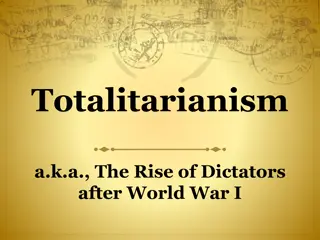Origins of WWII in Europe: Rise of Fascist Dictators
The origins of World War II can be traced back to the rise of fascist dictators like Mussolini and Hitler in Europe during the 1930s. This period saw the emergence of totalitarian regimes that promoted aggressive expansionist policies, leading to tensions that eventually erupted into a devastating global conflict. The Great Depression and new political ideologies played significant roles in fueling the rise of dictators and the subsequent outbreak of war.
Download Presentation

Please find below an Image/Link to download the presentation.
The content on the website is provided AS IS for your information and personal use only. It may not be sold, licensed, or shared on other websites without obtaining consent from the author.If you encounter any issues during the download, it is possible that the publisher has removed the file from their server.
You are allowed to download the files provided on this website for personal or commercial use, subject to the condition that they are used lawfully. All files are the property of their respective owners.
The content on the website is provided AS IS for your information and personal use only. It may not be sold, licensed, or shared on other websites without obtaining consent from the author.
E N D
Presentation Transcript
World War Two 1939-1945
The Origins of WW II in Europe: Introduction World War Two began in 1939, when Germany invaded Poland. This act led to a war that eventually pitted the Axis Powers (Germany, Italy and Japan) against the Allied Powers (Britain, France, the Soviet Union and the U.S.). Although the invasion of Poland was the spark that began the war, there were many underlying causes. In particular, new political ideas promoted war.
The Rise of Dictators In Europe, the Great Depression caused the rise of new political beliefs and systems. In Italy, Benito Mussolini established fascism a totalitarian system in which the government controlled all aspects of life and used terror to enforce its policies. In Germany, Adolf Hitler and the Nazis gained power. Nazism was a type of fascism that encouraged strong feelings of national pride, anti-Semitism (hatred of Jews) and the use of violence. Under Nazism, human rights were crushed. Rival political parties and criticism of the government were banned. Once in power, these dictators demanded more territory from neighboring countries.
The United States Tries to Remain Neutral With fascists in control of much of Europe in the late 1930s, war became increasingly likely. Congress passed a series of laws to keep America out of a new European war. In 1917, the United States had become involved in WW1 when Germany attacked American ships bringing supplies to Great Britain and France. To avoid a similar situation, Congress passed the Neutrality Acts (1935-1937). These prohibited Americans from traveling on the ships of nations at war or from selling arms to countries at war.
The U.S. Tries to Remain Neutral Despite public opposition to war, President Roosevelt began making preparations in case the U.S. was dragged into the conflict. Congress increased spending on the army and navy. In 1940, it set up the first peacetime draft for men between the ages of 21 and 35. In 1941, Congress passed a law that allowed the U.S. government to send or lend war materials to countries fighting against Germany, Italy and Japan. Soon U.S. battleships began protecting British ships carrying supplies. It seemed that American involvement in the war was just a matter of time.
America Enters World War Two, 1941 Surprisingly, events in Asia, not Europe, finally brought the U.S. into the war. In 1937, Japan had invaded China. Later, Japan took over parts of Southeast Asia. President Roosevelt felt that American interests in Asia and the Pacific were threatened by Japan s expansion. He cut off all US trade with Japan, agreeing to resume trade only if Japan withdrew its forces. Late in 1941, Japanese military leaders decided to launch a surprise attack against the U.S., believing that they would catch Americans unprepared and eliminate U.S naval power in the Pacific.
Japan Attacks US On December 7, 1941, Japanese planes attacked the U.S. Pacific Fleet stationed at Pearl Harbor, Hawaii. They destroyed 200 planes, sank 19 ships, and killed over 2,400 Americans. The following day, President Roosevelt asked Congress to declare war on Japan. Soon after, Japan s allies, Germany and Italy declared war on the United States.
